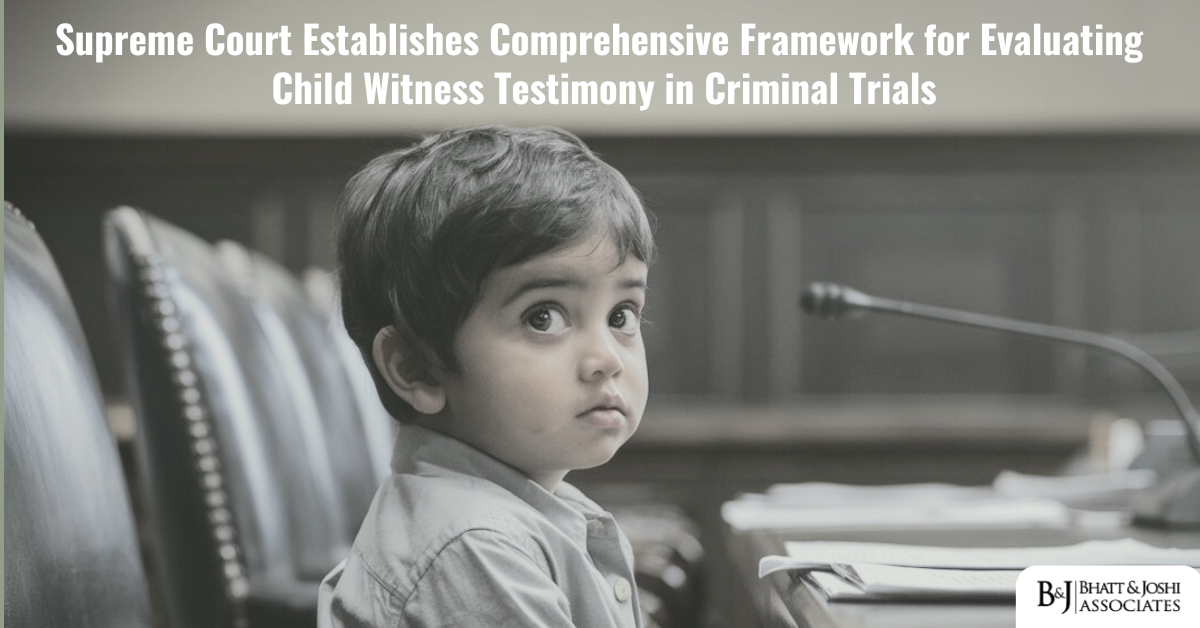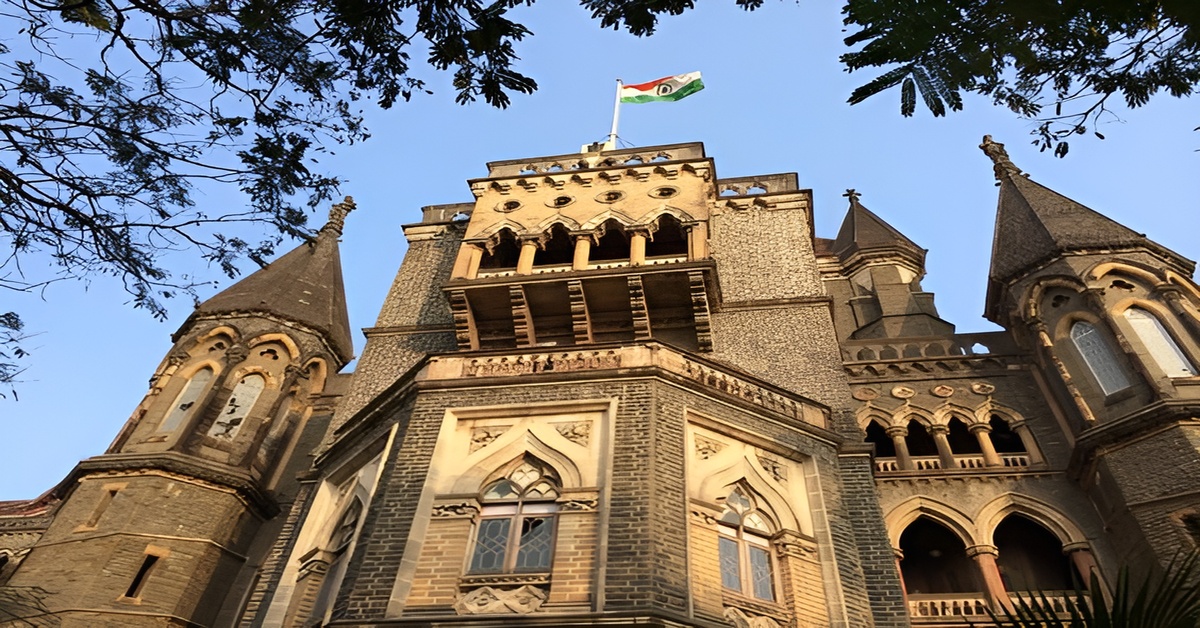Introduction
In a landmark judgment that provides crucial guidance on the evaluation of child witness testimony in criminal trials, the Supreme Court of India has established a comprehensive framework that balances the vulnerabilities of children with the imperatives of criminal justice. The judgment in State of Madhya Pradesh v. Balveer Singh (Criminal Appeal No. 1669 of 2012) addresses the complexities of assessing child witness testimony and enunciates clear principles for determining when such testimony can be relied upon, partially relied upon, or should be disregarded. The Court’s meticulous analysis offers valuable insights for trial courts grappling with child testimony in murder cases and other serious offenses.
Background of the Case and Procedural History
The case arose from the alleged murder of Birendra Kumari by her husband, Balveer Singh, on the night of July 15, 2003. According to the prosecution, the accused attacked his wife in their home, choking her to death by pressing his foot on her neck. Following her death, he allegedly cremated her body secretly in his field during the night itself, without informing her family members who lived in the same village. The incident was witnessed by their seven-year-old daughter, Rani, who was the sole eyewitness to the crime.
The prosecution’s case was primarily based on Rani’s testimony, along with circumstantial evidence including the clandestine cremation and the accused’s subsequent disappearance. The Trial Court convicted Balveer Singh for offenses under Sections 302 and 201 read with Section 34 of the Indian Penal Code, sentencing him to life imprisonment. However, the High Court overturned this conviction, finding Rani’s testimony unreliable due to an 18-day delay in recording her statement under Section 161 of the Criminal Procedure Code and the possibility of tutoring as she was residing with her maternal relatives who were at inimical terms with the accused.
The State of Madhya Pradesh appealed to the Supreme Court, challenging the High Court’s acquittal. This provided the Supreme Court an opportunity to comprehensively address the principles governing the appreciation of child witness testimony in criminal trials.
Legal Framework for Competence of Child Witnesses Under Indian Evidence Act
The Supreme Court began its analysis by examining the fundamental question of when a child is competent to testify. The Court emphasized that Section 118 of the Indian Evidence Act, 1872 does not prescribe any minimum age requirement for witnesses. The provision states that all persons are competent to testify unless the court considers them “prevented from understanding the questions put to them, or from giving rational answers to those questions, by tender years, extreme old age, disease, whether of body or mind, or any other cause of the same kind.”
The Court clarified that intellectual capacity, not age, is the determining factor for witness competence. A child of tender age can be permitted to testify if found capable of understanding questions and giving rational answers. This position aligns with earlier judgments in Dattu Ramrao Sakhare v. State of Maharashtra (1997) and Pradeep v. State of Haryana (2023), which established that the evidence of a child witness cannot be rejected solely on the grounds of tender age.
Preliminary Examination of Child Witnesses in Criminal Trials: A Mandatory Safeguard
A significant aspect of the judgment is the Court’s emphasis on the mandatory requirement of conducting a preliminary examination before recording a child’s testimony. Drawing from Pradeep v. State of Haryana (2023), the Court held that it is the duty of the trial judge to ascertain whether the child:
- Understands the questions put to them
- Is able to give rational answers
- Understands the duty of speaking the truth
The Court mandated that trial judges must record their opinion and satisfaction regarding the child’s competence, clearly stating the reasons for such satisfaction. Additionally, the questions put to the child during preliminary examination must be recorded to enable appellate courts to assess the correctness of the trial court’s opinion. This preliminary examination serves as a crucial safeguard to ensure that only reliable child witnesses are permitted to testify.
Comprehensive Guidelines for Evaluating Child Witness Testimony
The Supreme Court synthesized a twelve-point framework for evaluating child witness testimony in criminal trials, addressing various aspects from competence determination to partial reliance on tutored testimony. The Court noted that while child witnesses are considered “dangerous witnesses” due to their susceptibility to influence, their testimony should not be outrightly rejected but evaluated with greater circumspection.
The Court clarified several key principles, including that corroboration of child witness testimony is not a rule but a measure of caution and prudence. A child witness who exhibits the demeanor of any other competent witness and whose evidence inspires confidence can be relied upon without any need for corroboration and can form the sole basis for conviction. The Court emphasized that if a child’s testimony explains the relevant events without embellishments and inspires confidence, no corroboration is necessary.
Drawing from State of M.P. v. Ramesh (2011), the Court noted that children at tender ages are incapable of having malice or ill will against any person. Therefore, there must be something on record to satisfy the court that something had gone wrong between the incident date and evidence recording to make the witness falsely implicate the accused.
Innovative Test for Parsing Tutored Testimony
Perhaps the most significant contribution of this judgment is the Court’s formulation of a two-step test for determining whether a witness has been tutored, an issue that frequently arises in cases involving child witnesses. The Court distinguished between two effects of tutoring: improvisation (adding new details inconsistent with previous statements) and fabrication (testimony doctored or falsified in its entirety).
For improvisation, the Court held that such testimony must be addressed through the conventional process of confronting the witness with contradictions or omissions in previous statements, following procedures under Section 162 of the Criminal Procedure Code read with Section 145 of the Evidence Act.
For allegations of fabrication, the Court established that twin conditions must be satisfied:
- Opportunity for tutoring: The accused must establish foundational facts suggesting the probability of tutoring, such as:
- Delay in recording the witness’s statement
- Doubtful presence of the witness
- Motive for false testimony
- Witness’s susceptibility to influence
- Reasonable likelihood of tutoring: The foundational facts must be further substantiated through evidence proving:
- Strong motive to depose falsely
- Unexplained delay indicative of unfair practices
- Material discrepancies or contradictions exposed during cross-examination
- Incompatibility with other evidence that negates the witness’s presence
The Court emphasized that a mere bald assertion of tutoring is insufficient—it must be cogently established through evidence.
Partial Reliance on Tutored Testimony: A Novel Approach
The Court introduced a nuanced approach to dealing with partially tutored testimony, drawing from State of M.P. v. Ramesh (2011). It held that even if parts of a child’s testimony are found to be tutored, the untutored portions can still be relied upon if they inspire confidence. In such cases, the untutored part can be believed or taken into consideration for corroboration, similar to the approach with hostile witnesses.
This principle represents a pragmatic approach to child testimony, recognizing that children may be influenced in some aspects of their narration while remaining truthful in others. As the Court noted: “Part of the statement of a child witness, even if tutored, can be relied upon, if the tutored part can be separated from the untutored part, in case such remaining untutored or untainted part inspires confidence.”
Role of Circumstantial Evidence in Child Witness Testimony
The judgment also addresses principles for appreciating circumstantial evidence in cases where child witness testimony forms part of the prosecution case. The Court emphasized that circumstantial evidence must form a complete chain, pointing unerringly to the guilt of the accused and excluding every possible hypothesis except the guilt of the accused.
In the case at hand, the Court identified several incriminating circumstances that corroborated Rani’s testimony:
- The accused’s failure to explain what happened to his wife despite admitting he was present in the house
- The unnatural conduct of cremating the body secretly without informing family members
- The accused’s flight after the cremation
- The strained relationship between the accused and the deceased, supported by previous complaints and maintenance cases
These circumstances, when viewed collectively with the child witness testimony, strengthened the prosecution case against the accused.
Addressing the High Court’s Errors in Appreciation of Evidence
The Supreme Court found several errors in the High Court’s approach to evaluating the child witness testimony. The High Court had rejected Rani’s testimony primarily due to the 18-day delay in recording her statement under Section 161 of the Criminal Procedure Code and the possibility of tutoring as she was residing with her maternal relatives.
The Supreme Court observed that mechanically discarding testimony solely on the ground of delay was not warranted, particularly when no question was put to the Investigating Officer to explain such delay. The Court noted that the delay appeared inadvertent rather than deliberate, as the statements of both Rani and her grandfather were recorded on the same day.
Regarding Rani’s residence with her maternal uncle, the Court observed: “Where else does the High Court expect a child of such tender age in such circumstances to reside?” This pragmatic observation acknowledges the reality that a seven-year-old child who had lost her mother and whose father had absconded would naturally be in the care of other family members.
Conclusion: Balancing Child Protection with Evidentiary Integrity
The Supreme Court’s judgment in State of Madhya Pradesh v. Balveer Singh represents a significant advancement in the jurisprudence on child witness testimony. By establishing a comprehensive framework for evaluating such testimony, the Court has provided much-needed guidance to trial courts grappling with the challenges of child witnesses in criminal cases.
The judgment strikes a careful balance between recognizing the vulnerabilities of child witnesses and ensuring that their testimony is not mechanically rejected. The two-step test for determining tutored testimony and the principles for partial reliance on such testimony reflect a nuanced understanding of the complexities involved in child testimony.
For legal practitioners, this judgment serves as an essential reference point for cases involving child witnesses. It emphasizes the need for thorough preliminary examination to establish competence, careful evaluation of testimony rather than mechanical rejection, and a structured approach to assessing allegations of tutoring. By clarifying that corroboration is not mandatory but a measure of caution, the Court has reinforced the principle that child witnesses can provide valuable and reliable evidence in criminal trials if properly evaluated.
This landmark judgment not only advances the jurisprudence on evidence law but also serves the broader objective of ensuring that justice is not denied merely because a key witness happens to be a child. The principles established in this case will undoubtedly guide courts for years to come in their assessment of child witness testimony in criminal trials.














